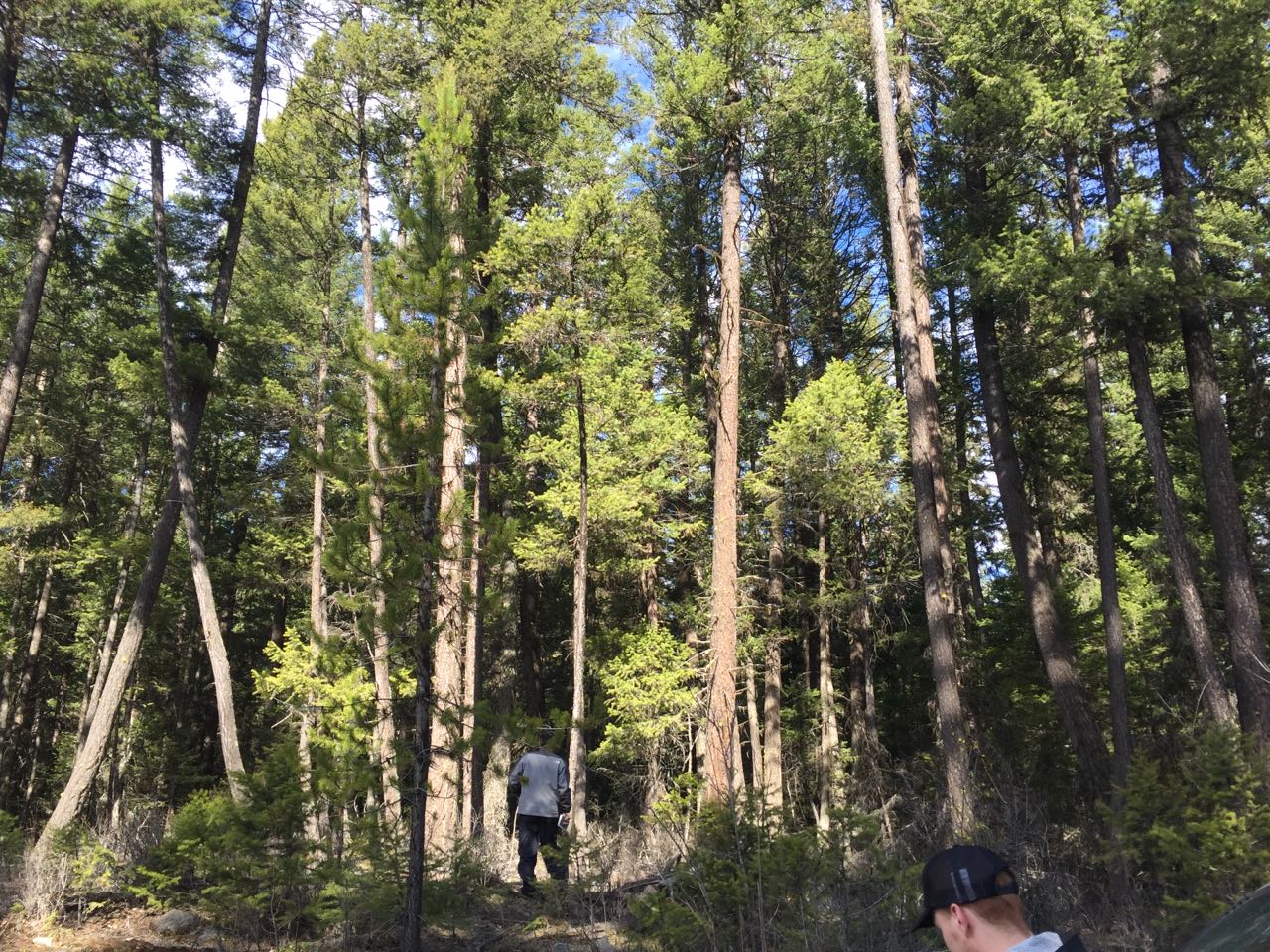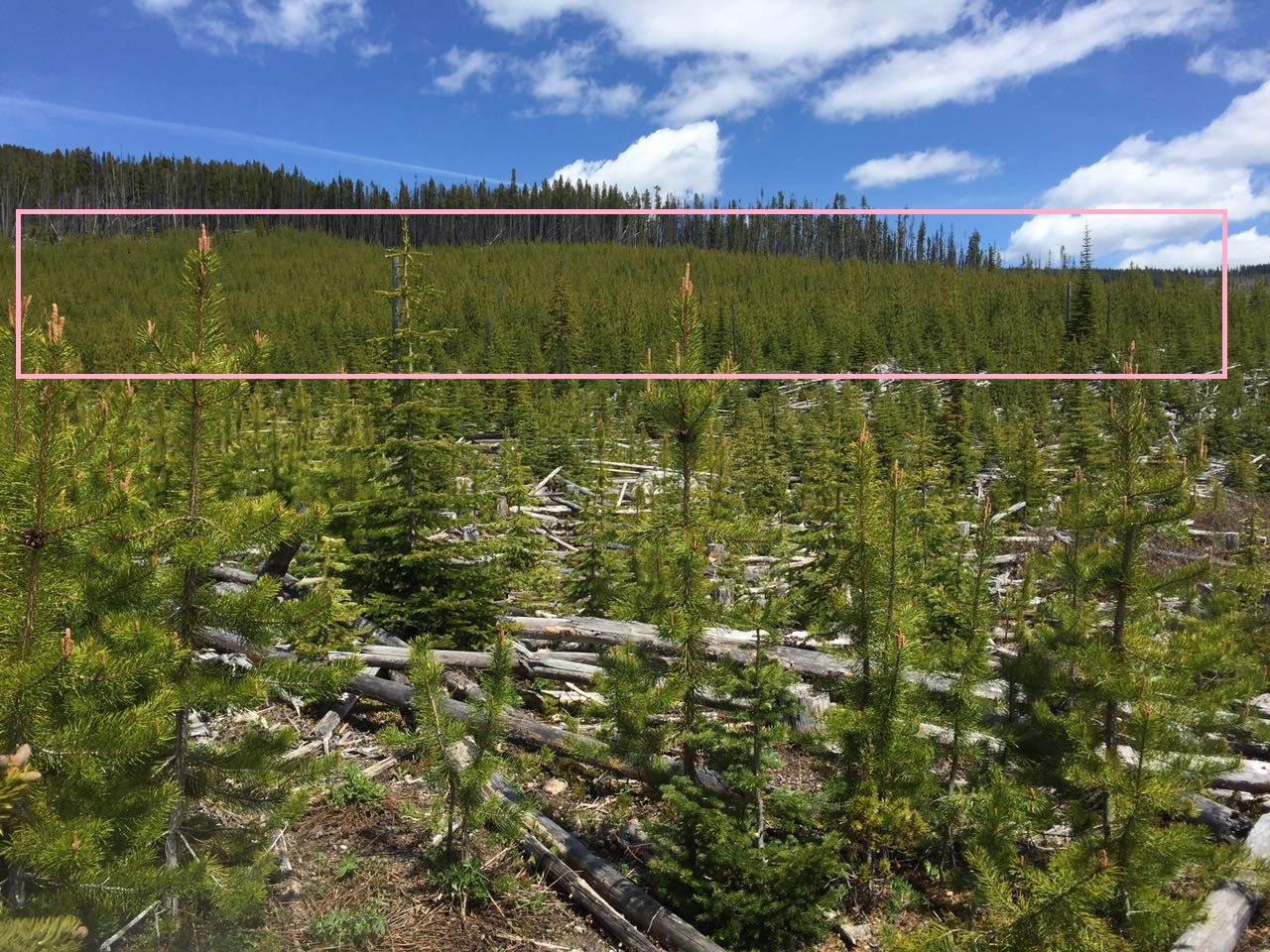My project focused on the leaf and individual tree levels, which seemed to have been well-designed at the first glance, but actually this project was incomplete, as it did not point out the tree species, research sites, and aspects (e.g., age effect, species effect, fertilization effect and drought effect) that were under studied. After several rounds of thorough discussions, my supervisor and I planed to incorporate the effect of thinning treatment, for thinning management have ecological and economical benefits, like promoting tree vigor in resistance to beetle attack, reducing the risk of forest fire, and enhancing truck quality. However, the species and study sites are indecisive, and would be dependent on the site condition of the available watersheds.
So the first step is to select an appropriate study site. We set the criteria for the proper experimental site: (1) Extremely dense; (2) Even-aged, young mono-species stands; and (3) Enough area for three experimental blocks. ( in each block, there would be three square plots (30 m x 30 m)). Extremely dense stands provide the possibility to create two thinning treatments (sparse density, median density) and one control (dense density). Even-age and mono-species rule out the interference of age and species effect. In view of the convenience of measuring photosynthesis and stomatal conductance, leaves should not be too tall to reach, thus young stands would be a better option.
On May, 31, 2016, we had our first field trip to select the experimental site. We went to the mountains around Postill Lake which was about 25 minutes drive from University of British Columbia, Okanagan Campus. Forests were dense and large there, but too tall, so we delete it from our consideration.
 Figure 1. Forests around Postill Lake.
Figure 1. Forests around Postill Lake.
We then went to the Upper Penticton Watershed, which was about one and half hours drive from Kelowna. This watershed experimental site was established in the 1980s, which provides excellent long-term historic data on climate, forest changes and hydrology, as well as reforestation plots. We easily found even-aged, dense young forest stands. And the area was under management, so we would not worry about vandalism or steal of our equipment. But the disadvantages were that the watershed was far, and the terrain of which was hilly and rocky. Anyway, we reserved it as a potential choice.
 Figure 2. Forests in the Upper Penticton Watershed. (Pink frame indicates the potential experimental site)
Figure 2. Forests in the Upper Penticton Watershed. (Pink frame indicates the potential experimental site)
We also went to the Myra Canyon Trestles, which was about one hours drive from Kelowna. The forests were dense as well, but the remained burned-out trestles was too dangerous, so we excluded it as well.
 Figure 3. Forests in the Mrya Canyon Trestles.
Figure 3. Forests in the Mrya Canyon Trestles.
In the end, we chose an even-age 16 years old lodgepole pine stand in the Upper Penticton Watershed as our experimental site.
 Fig. 1 The location of the blocks (Dark red: Block 1; Red: Block 2; Green: Block 3).
Fig. 1 The location of the blocks (Dark red: Block 1; Red: Block 2; Green: Block 3). Fig. 2 A simplified graph of the three blocks
Fig. 2 A simplified graph of the three blocks Figure 1. Forests around Postill Lake.
Figure 1. Forests around Postill Lake. Figure 2. Forests in the Upper Penticton Watershed. (Pink frame indicates the potential experimental site)
Figure 2. Forests in the Upper Penticton Watershed. (Pink frame indicates the potential experimental site) Figure 3. Forests in the Mrya Canyon Trestles.
Figure 3. Forests in the Mrya Canyon Trestles.